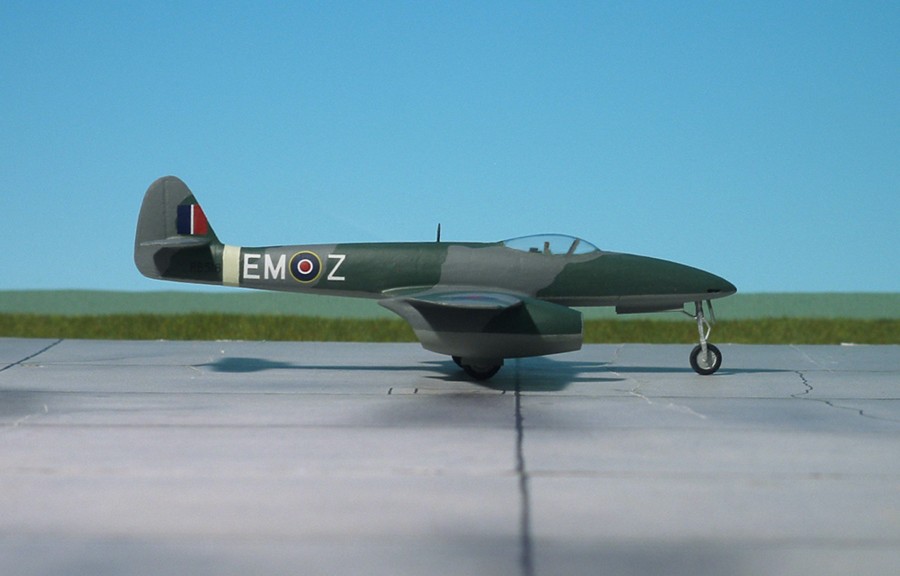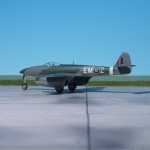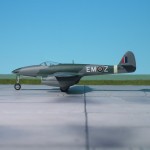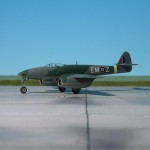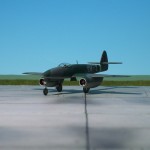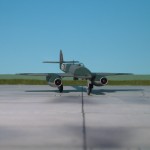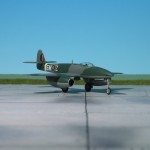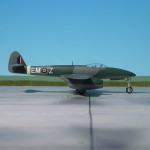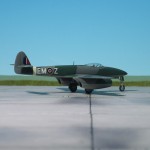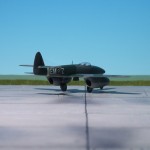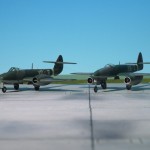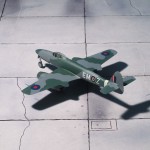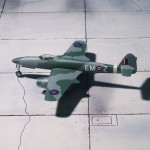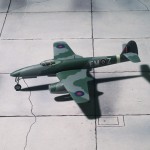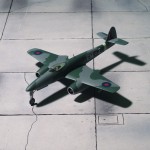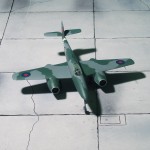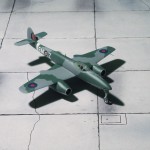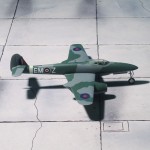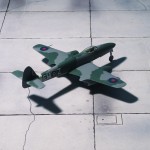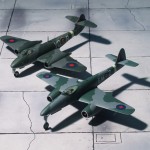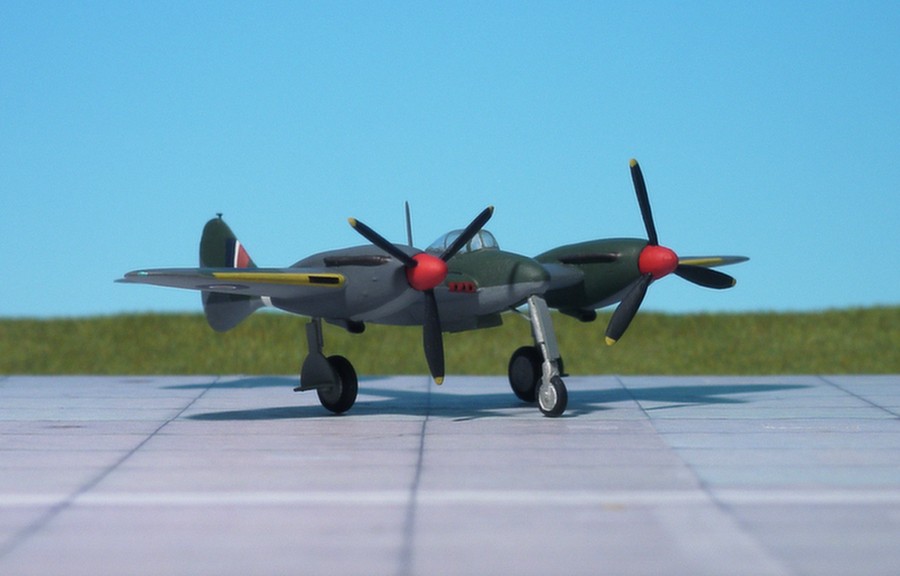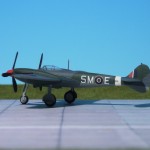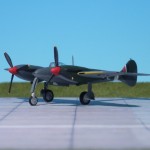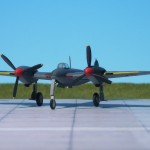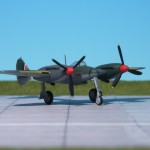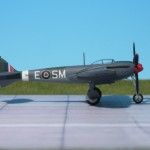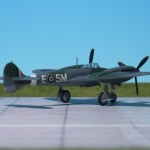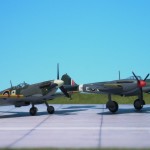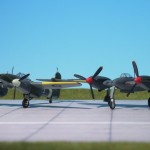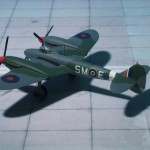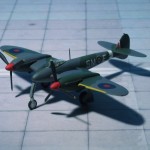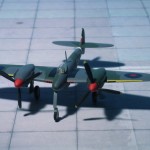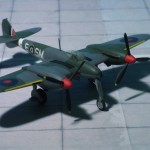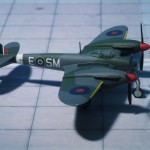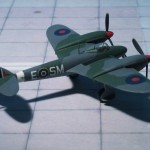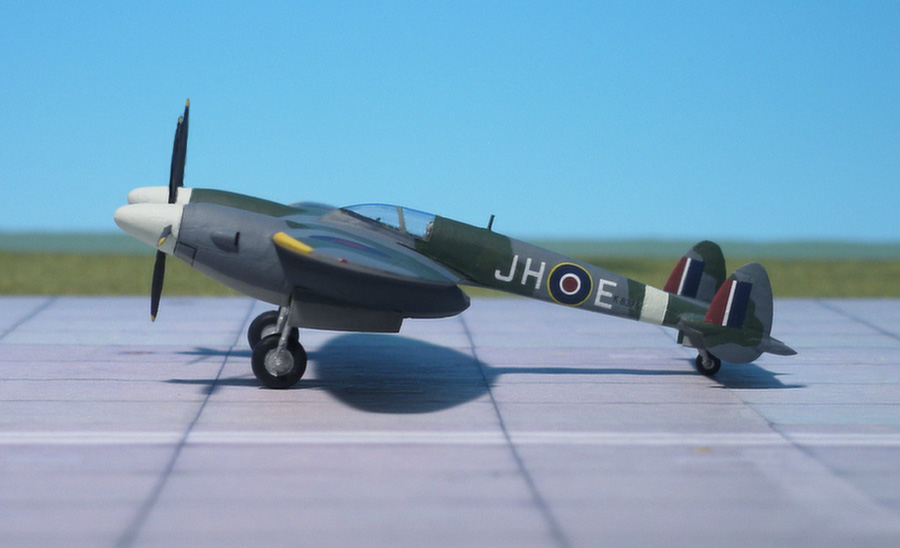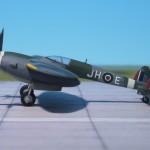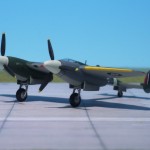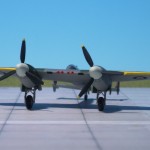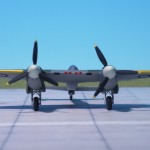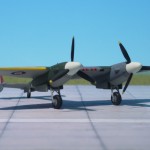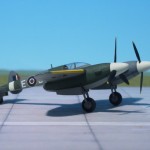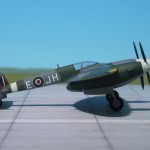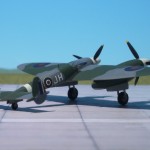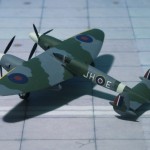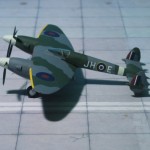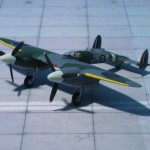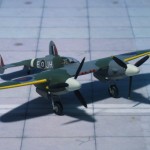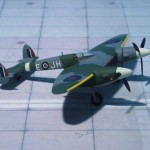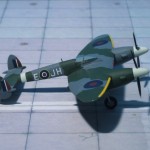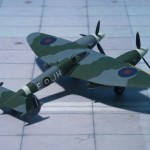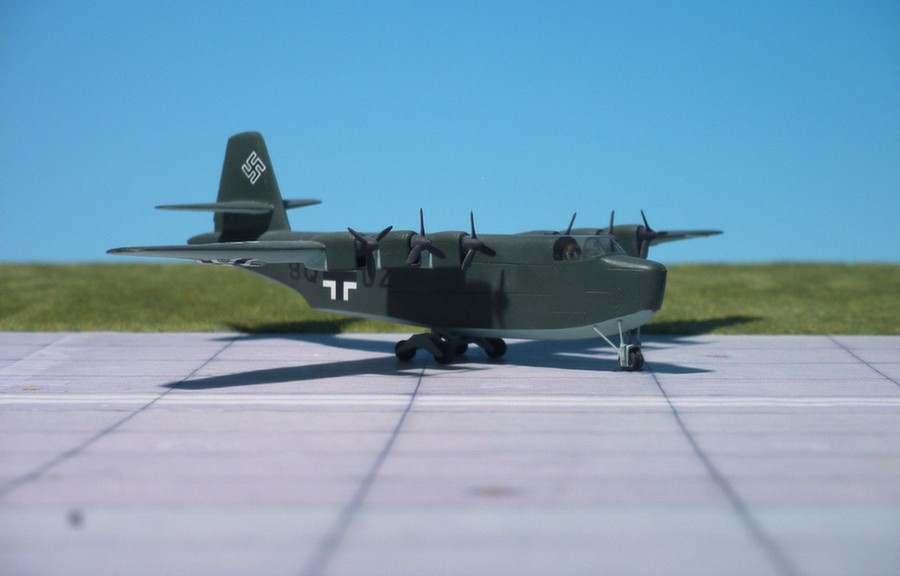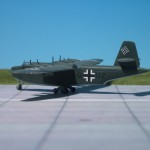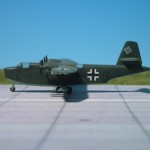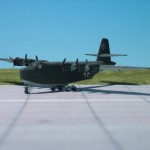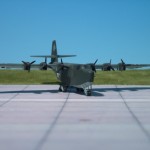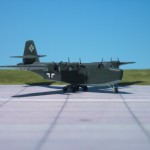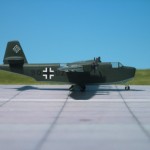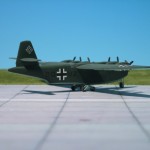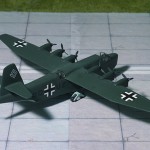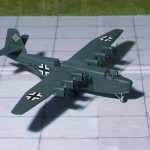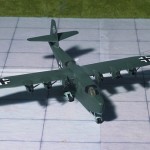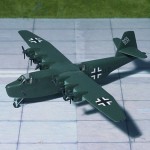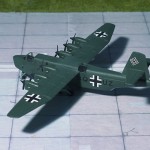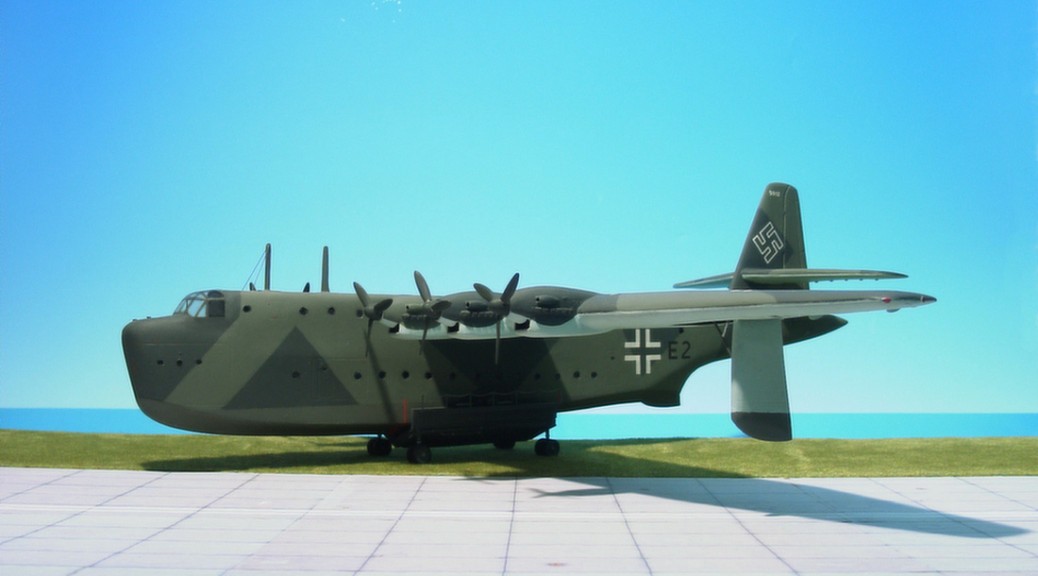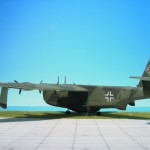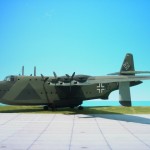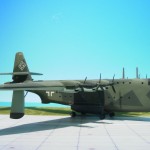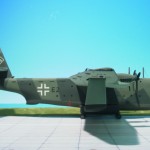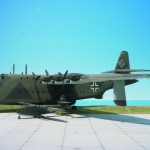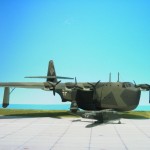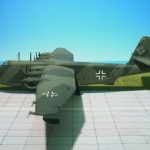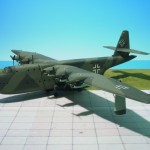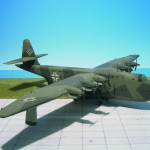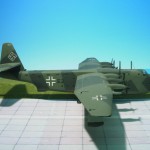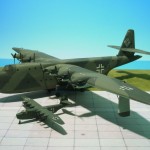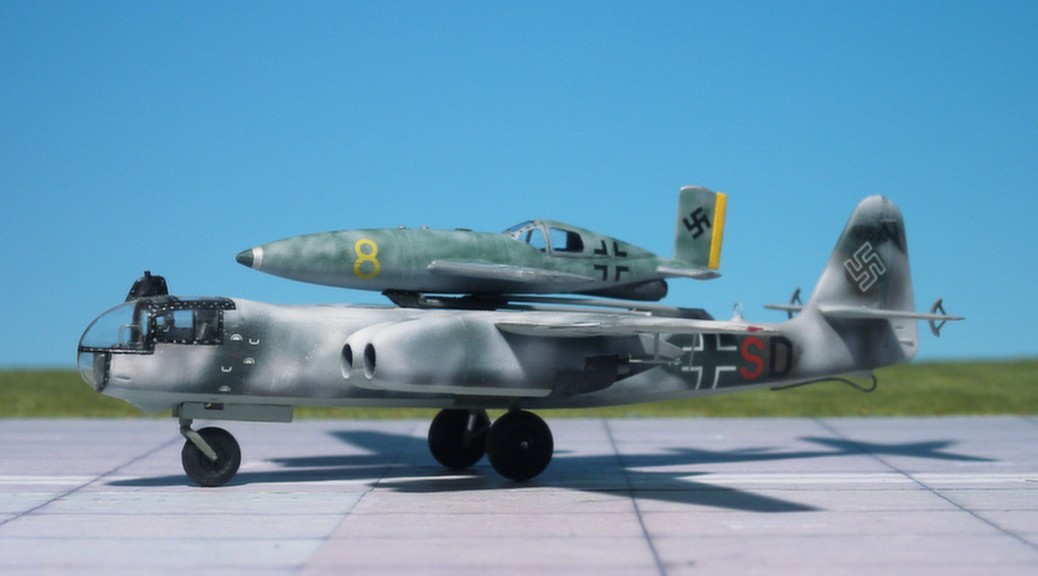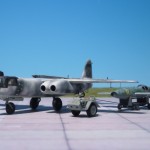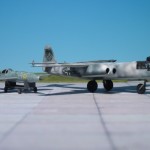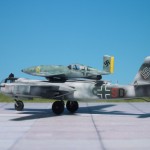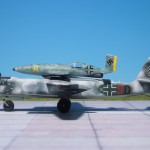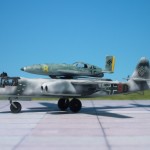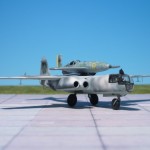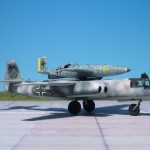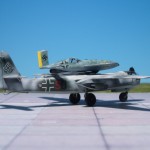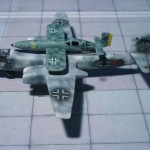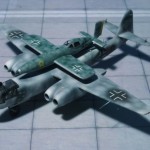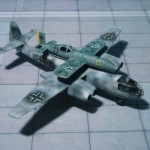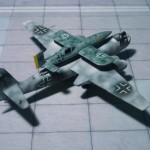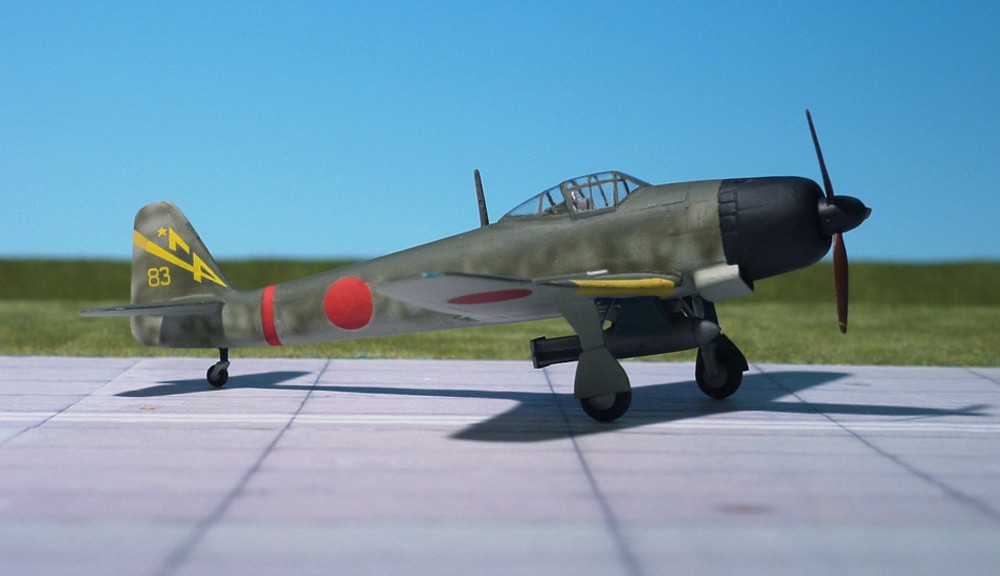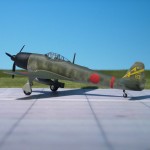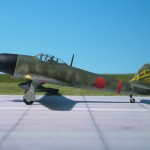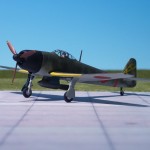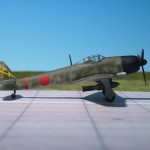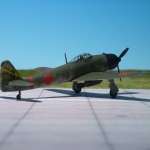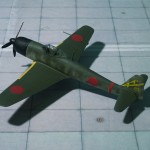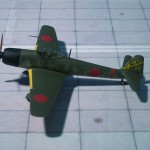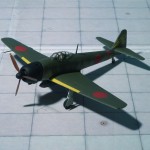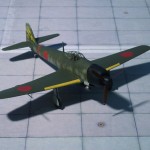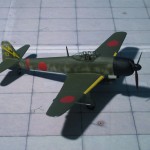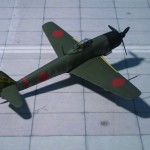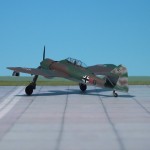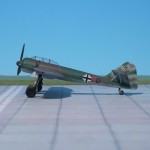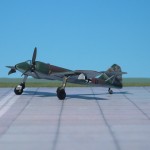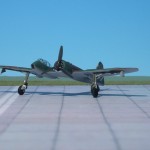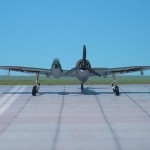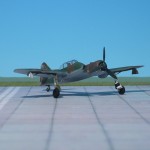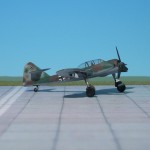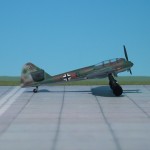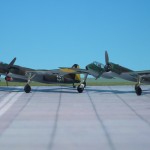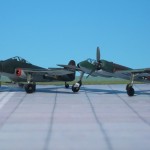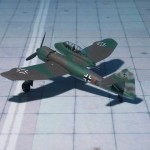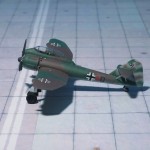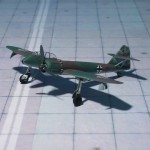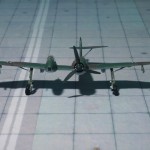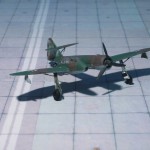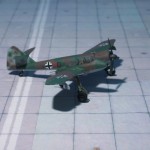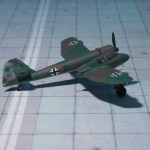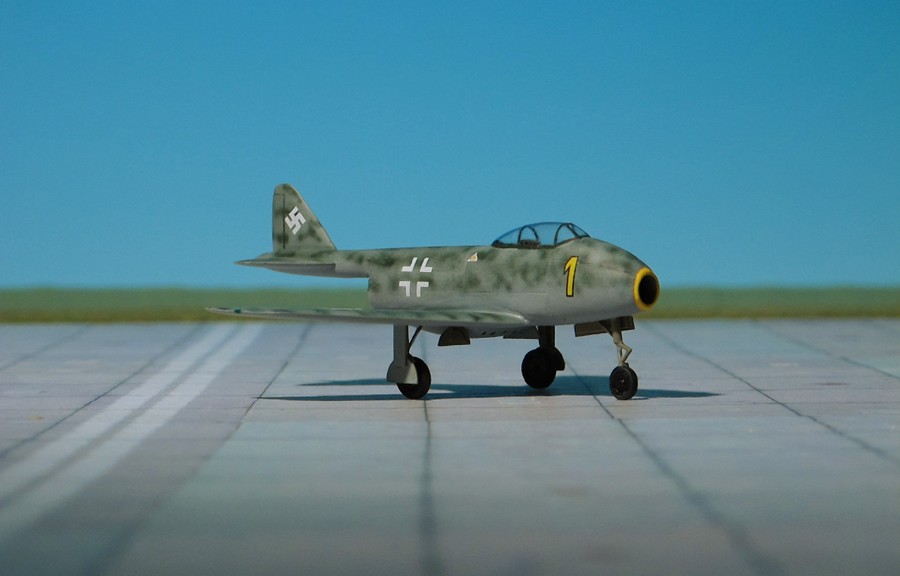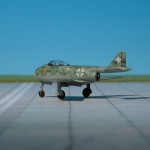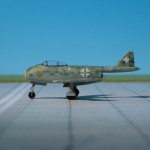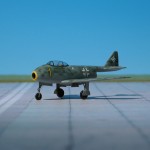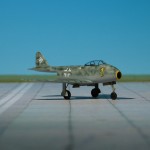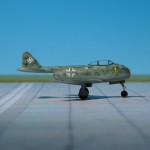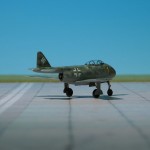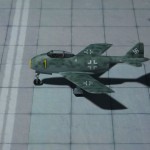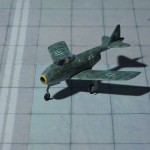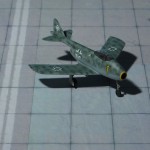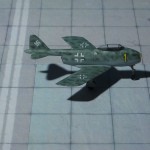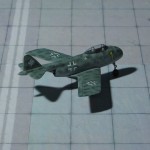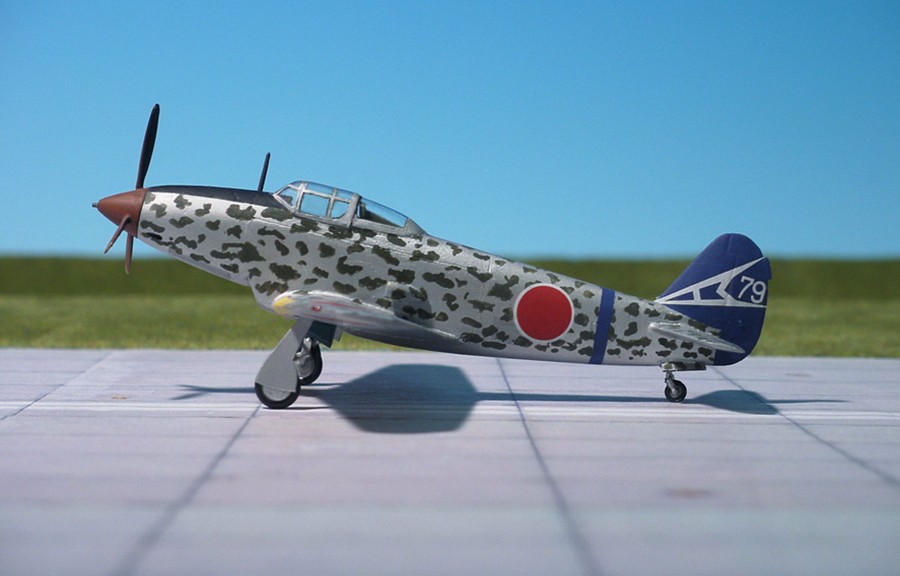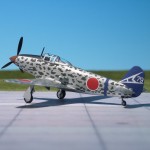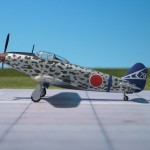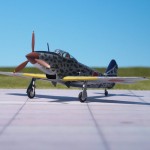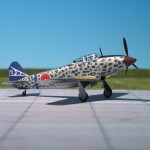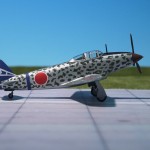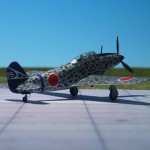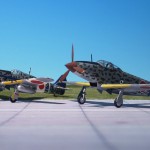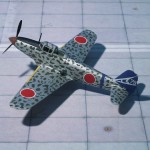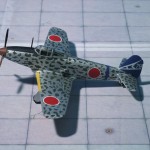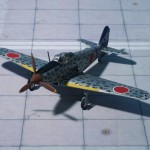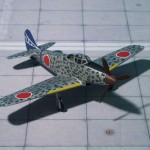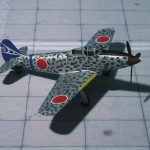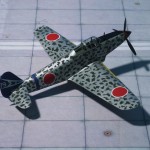Type: Two Turbojets Single Seat Fighter Project
Competitor to the Gloster Meteor
Supermarine Type 327 “Spito” (Unicraft, Resin)
TYPE: Fighter
ACCOMMODATION: Pilot only
POWER PLANT: Two Rolls-Royce Merlin liquid-cooled engines, rated at 1,240 hp each
PERFORMANCE: 450 mph at 15.000 ft
COMMENT: The Supermarine Type 324 and Type 325 were British two-engined fighter designs proposed as the replacement for the Supermarine Spitfire and Hawker Hurrican. Neither of them nor a revised design – the Type 327 – to carry cannon was accepted for development and production.
As an aircraft to succeed the Hurricane and Spitfire then entering service, Air Ministry specification F.18/37 required a 400+ mph (at 15,000 ft) fighter with twelve .303 inch machine gun armament.
Hawker Aircraft submitted a single seat, single engine design with two possible engines, the Hawker Typhoon powered by the Rolls-Royce Vulture and the Hawker Typhoon, with Napier Sabre engine.
Gloster submitted two similar twin-boom designs with 12 Browning machine guns in the nose and a pusher Napier Sabre engine as well as an adaptation of their proposal to F.9/37 with nose-mounted armament.
Bristol’s design was one airframe offered with three alternative engines.
In 1938 Supermarine submitted brochures describing the Type 324 (under the company specification No.458) along with the Type 325. Both were compact twin-engine designs – one tractor and one pusher – with either Rolls-Royce Merlin or Bristol Taurus engines.
Hawker’s designs – which Sydney Camm had been working on since April 1937 – were accepted and prototypes of each ordered.
The Type 324 was a low-wing, twin-engined monoplane featuring the elliptical wing shape of the Spitfire, with retractable tricycle undercarriage.
Twin engines were expected to give a maximum speed of 450 mph. In addition, the twin layout gave the usual advantages of torque cancellation, improved pilot view, tricycle landing gear, performance, improved take-off performance and allowed the use of the proven Rolls-Royce Merlin engine.
The structure of the aircraft was Alclad aluminium alloy. The wing was designed in sections, so that alternative engines (Bristol Taurus) or armament could be accommodated. Fowler flaps were fitted for take-off/landing. Spoiler flaps were fitted to improve performance.
A number of armament types were considered. The main was 12 Browning in two packs of six in each wing outer section; these could be removed complete with ammunition to allow rapid rearming and servicing of the weapons.
When the Air Ministry felt progress on the Westland Whirlwind cannon-armed fighter was too slow, they asked for the F.18/37 tenders to be revised with 20mm cannon armament. Supermarine dropped the pusher design and proposed a six-cannon fighter as the Type 327 Spito. The Ministry did not feel its advantages outweighed other considerations, and that the Whirlwind – or the adaption oft he Bristol Beaufort – would enter service before Supermarine’s design could (Ref.: 24).
Miles M.22 (Unicraft, Resin)
Blohm & Voss FGP 227 (Anigrand, Resin)
TYPE: 1:3,75 Scale wooden flying model of the Blohm & Voss Bv 238 Flying boat
ACCOMMODATION: Pilot and flight engineer
POWER PLANT: 6 x 21 hp two stroke engines
COMMENT: Testbed for flight characterics of the giant flying boat Blohm & Voss Bv 238. Built by students of the Flugtechnische Fertigungsgemeinschaft Prag (FGP), Czech Rep.
Blohm & Voss Bv 238 V1, (Airmodel, Vacu)
TYPE: Long-range Transport, Maritime Patrol and Bomber Flying Boat
ACCOMMODATION: Crew of 12
POWER PLANT: Six Daimler-Benz DB 603G, rated at 1,900 hp
PERFORMANCE: 264 mph at 19,685 ft
COMMENTS: First prototype flew in April 1944, but was sunk early 1945 by strafing Mustangs. At the end of WWII the second prototype was virtually complete and construction of the third was in an advanced stage
Arado Ar 234C-2 (Dragon) with Focke-Wulf “Rammer” (Unicraft, Resin)
Kawasaki Ki-119 (Unicraft, Resin)
TYPE: Light bomber. Project
ACCOMMODATION: Pilot only
POWER PLANT: Mitsubishi Ha-104 radial engine, rated at 1,900 hp
PERFORMANCE: 360 mph at 19,685 ft
COMMENT: The Kawasaki Ki-119 was a design for a single-engine light bomber that would have been used in the defense of the Japanese homeland. Earlier Japanese bombers had been designed to operate over long distances, either in China or over the Pacific, but by the start of 1945 it was clear that the Japanese army might soon be fighting on home soil. This meant that a short range single-engine bomber would be possible, saving on the limited supply of both engines and trained air crew.
In March 1945 the Army Air Force issued Kawasaki with orders to produce a single seat bomber that could carry 1,764lb of bombs to targets 373 miles from its base, armed with two 20mm cannon and powered by one 1,900 hp Army Type 4 radial engine. Unlike many new aircraft being developed in Japan in 1945 the Ki-119 was not designed to be used in suicide attacks.
Takeo Doi and his team produced a design and a mock-up in three months. The fuselage was based on that of the Kawasaki Ki 100 radial-engine fighter. The aircraft was made as easy to fly as possible – a wide track undercarriage with good shock absorbers was chose to make the aircraft easy to handle on the ground, and large wings with a high aspect-ratio were designed, to make it easy to handle in the air. The aircraft was designed to carry three different sets of armament. In its basic light bomber role it was to be armed with two 20mm cannon and one 1,764lb bomb. It could also serve as a fighter escort, with no bombers but two extra 20mm cannons, or as a dive bomber with two 551lb bombs.
The impressively rapid development of the Ki-119 came to a halt in June 1945 when the detailed drawings were destroyed when American air raids damaged Kawasaki’s factory at Kagamigahara. This pushed back the expected delivery date for the prototype from September until November, with production expected in time for the new aircraft to take part in the fighting of 1946. The unexpectedly sudden end to the war meant that the prototype was never completed (Ref.: 24).
Blohm & Voss Bv. 237 (Unicraft, Resin)
TYPE: Dive bomber, ground attack fighter. Project
ACCOMMODATION: Pilot only
POWER PLANT: One BMW 801D radial engine, rated at 1,700 hp
PERFORMANCE: 360 mph
COMMENT: The Blohm & Voss Bv 237 was a proposed dive bomber with an unusual asymmetric design based on the Blohm & Voss Bv 141, as well as other projects like Bv P.194 and Bv P.204. In 1942 the Luftwaffe was interested in replacing the venerable but ageing Junkers Ju 87, and Dr. Richard Vogt’s design team at Blohm & Voss began work on project P 177. The dive bomber version would have had a one man crew and was heavily armed with cannon, machine gun and bombs. A two seat ground attack version was also proposed. A final B-1 type was to incorporate a Junkers Jumo 004B turbojet engine in a third nacelle slung underneath the wing, between the piston engine and the cockpit. In early 1943 a production order was issued for the P 177 now called the Bv 237. In the summer that year the RLM ordered all developmental work stopped. Work continued later and it was determined that construction could begin in mid 1945, but plans for a pre-production A-0 series were abandoned, leaving the project at the pre-production stage near the end of 1944, with only a wooden mock-up completed (Ref.: 23).
Blohm & Voss Bv P.211.01 (Unicraft, Resin)
TYPE: Interceptor fighter. Project
ACCOMMODATION: Pilot only
POWER PLANT: BMW 003A-1 turbojet, rated at 800 kp
PERFORMANCE: 536 mph at 26,250 ft (estimated)
COMMENT: Design of an interceptor fighter from mid 1944, forerunner of the Bv P.211.02, that was submitted for the “Volksjäger” (Peoples fighter) competition. Winner was the Heinkel He 162 “Spatz”.
Kawasaki Ki-88 (Unicraft, Resin)
TYPE: Fighter, fighter bomber
ACCOMMODATION: Pilot only
POWER PLANT: One Kawasaki Ha-140 liquid-cooled engine, rated at 1,500 hp
PERFORMANCE: 373 mph at 19,685 ft
COMMENT: The Kawasaki Ki 88 was designed as a fighter aircraft and inspired by the Bell P-39 Airacobra. Work on the design began in 1942 and by 1943 a full-scale mock-up was completed. The engine was mounted behind the cockpit, driving a tractor propeller via an extension shaft. Proposed armament comprised a 37 mm cannon in the propeller shaft and two 20 mm cannon in the lower section of the nose. Calculation suggested no great improvement on that of the Kawasaki Ki-61 Hien already in production, and so the project was abandoned during 1943 (Ref.: 1).
